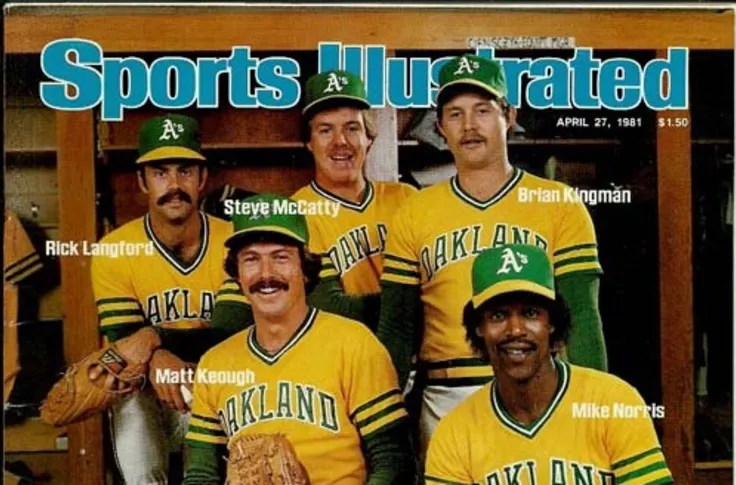
The 1981 baseball season stands as the great outlier in baseball history.
It was the first season when Major League players would go on strike. It was the first and still the only season with a first half and a second half. It was a season that lost 59 days cut directly from the middle of summer and cost the sport both fans and fortune.
The 1981 season is of particular interest now because it’s the closest thing to a comparison to the 2020 season that we have. They restarted the season just 10 days after settling the strike, and the results were such that this time around they’re looking at three weeks working out before resuming play, if other issues can be amicably settled.
Sports Illustrated writer Tom Verducci spelled the 1981 season out today, looking at the season from the perspective of Pete Rose, then with the Phillies as their first baseman.
At the time of the strike, Rose was on a hot streak, having hit in 14 consecutive games, going 23-for-55 to get to 3,630 hits, tied with Stan Musial for the most hits in National League history. He’d get that record-setting hit in his first game back. He was a face of 1981, to be sure. Just not the only one.
Further west, the 1981 season was about Billy Ball, and the resuscitation and salvation of baseball in Oakland. That A’s team started the season by winning 17 of its first 18 games. It was completely unexpected and couldn’t last, but Martin, in his second year at the Oakland helm, had the A’s 14 games over .500 and in first place when the strike hit after games on June 10.
When the sport resumed after a strange All-Star Game in Cleveland on Aug. 9, the A’s didn’t get back to the Coliseum until Aug. 14 for a three-game weekend series with the Angels. Oakland swept the series and averaged about 24,000 fans per game for the set.
There are two ways to look at that attendance average. One is to compare it to two years earlier, when, pre-Martin, the A’s drew just over 300,000 fans for the entire season and didn’t draw 20,000 for a single game all season.
Then there is the comparison with the rest of baseball. Around baseball, attendance dropped after the strike, down some 20 percent. Not in Oakland, however, where the A’s had 13 games with crowds over 20,000 after the resumption of play and four with attendance surpassing 30,000. The season attendance of 1,304,052 would be the best attendance in Oakland history – more by far than in any of the A’s three World Series-winning seasons. So, not bad for strike-shortened season.
The A’s were playing the second half of 1981 with house money – the season had been split into halves, and with the A’s having outlasted Kansas City for the lead at the point when the strike shut things down, were guaranteed a spot in the playoffs. Oakland swept the Royals in the first round to emerge as West champs, then got swept by Martin’s old team, the Yankees, to come up one series short of the World Series.
There were hidden factors that made 1981 less than an unqualified success for the A’s. Martin disliked using his bullpen. In the first half of the season, the Sports Illustrated-dubbed “Five Aces” of Mike Norris, Rick Langford, Matt Keough, Steve McCatty and Brian Kingman – had 36 complete games in 56 tries. After they returned, Martin tried using them at the same pace, but it wasn’t the games. Only McCatty had more complete games after the resumption of play, and as a group, there were just 23 complete games in 49 tries.
McCatty had nine of the 23 complete games, and led the American League in ERA at 2.33 and in shutouts with four. He would finish second in the Cy Young Award voting behind former A’s reliever Rollie Fingers, who won both the Cy Young and the MVP for the Brewers with 28 saves in 47 games with a 1.04 ERA.
Martin’s overuse of McCatty shredded the right-hander’s arm and shoulder, and in 1985 he was reduced to pitching with tears in his eyes, so badly did his shoulder ache.
“It felt like my arm was going to come right out of the socket,” he told Sports Illustrated in 1984.
After a 14-7 season in 1981, McCatty was just 24-30 with a 4.48 ERA over the next four seasons before calling it quits in 1986 at the age of 32.
For all of the A’s success in 1981, they only had two All-Stars, Norris, who gave up a solo homer to Dave Parker, and right fielder Tony Armas, who got one at-bat late in the game in Cleveland in what would be a 5-4 National League victory.
Armas would wind up tying for the home run title with Dwight Evans and Eddie Murray, all three finishing with 22. Armas finished second to Murray in the RBI race, 78-76. And Rickey Henderson led the AL in both runs, 89, and hits, 135. His hit total was one more than runner-up Carney Lansford, who led the league in batting at .336.
The 1981 season was a troubled one throughout baseball, but in Oakland it helped revive the franchise.
Follow Athletics insider John Hickey on Twitter: @JHickey3
Click the "follow" button in the top right corner to join the conversation on Inside the Athletics on SI. Access and comment on featured stories and start your own conversations and post external links on our community page.
"strike" - Google News
May 30, 2020 at 04:08AM
https://ift.tt/2XdvW94
The 1981 MLB Strike Season Was Tough on Most Teams, but Athletics Found Success - Sports Illustrated
"strike" - Google News
https://ift.tt/2WheuPk
https://ift.tt/2VWImBB
Bagikan Berita Ini














0 Response to "The 1981 MLB Strike Season Was Tough on Most Teams, but Athletics Found Success - Sports Illustrated"
Post a Comment